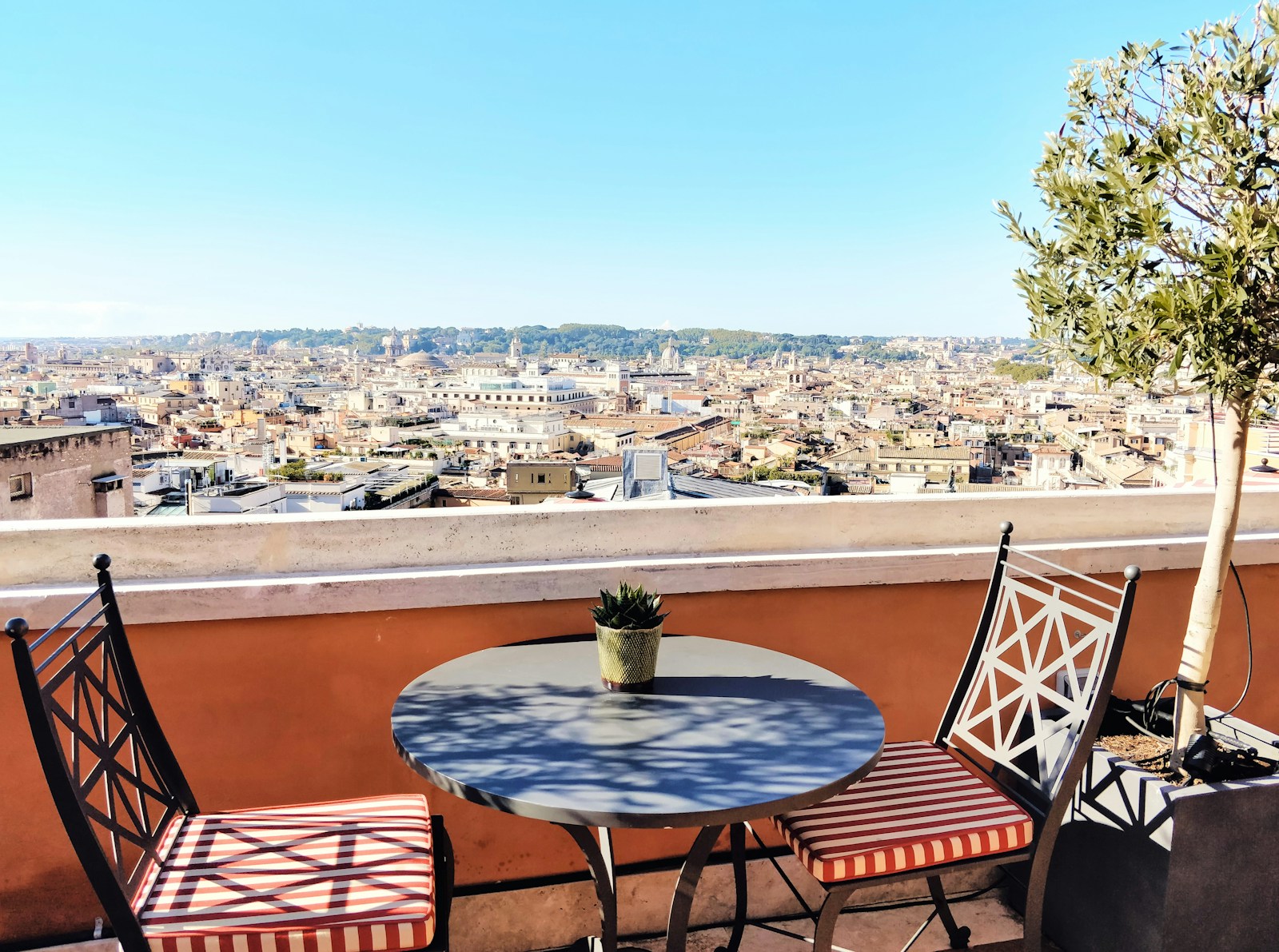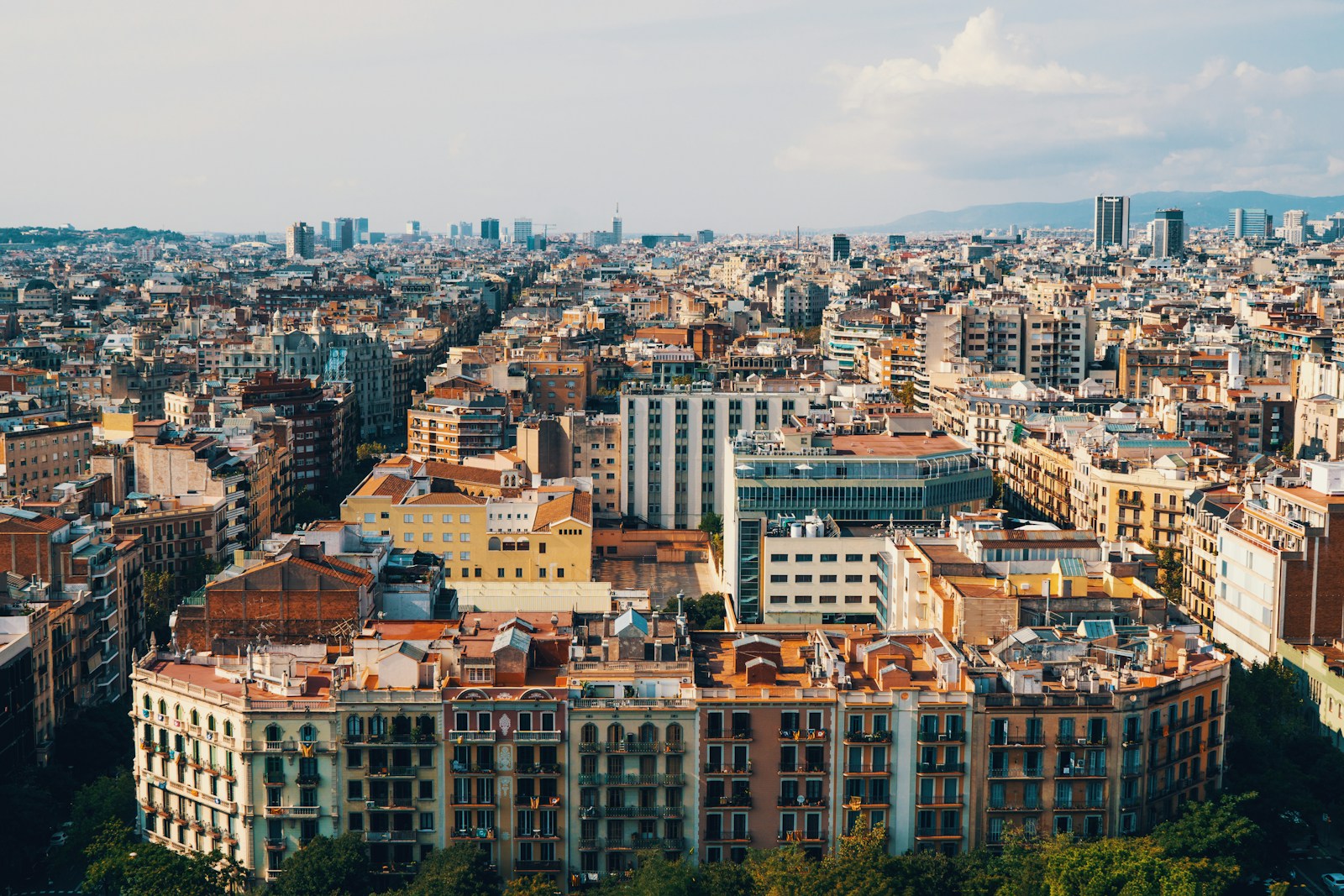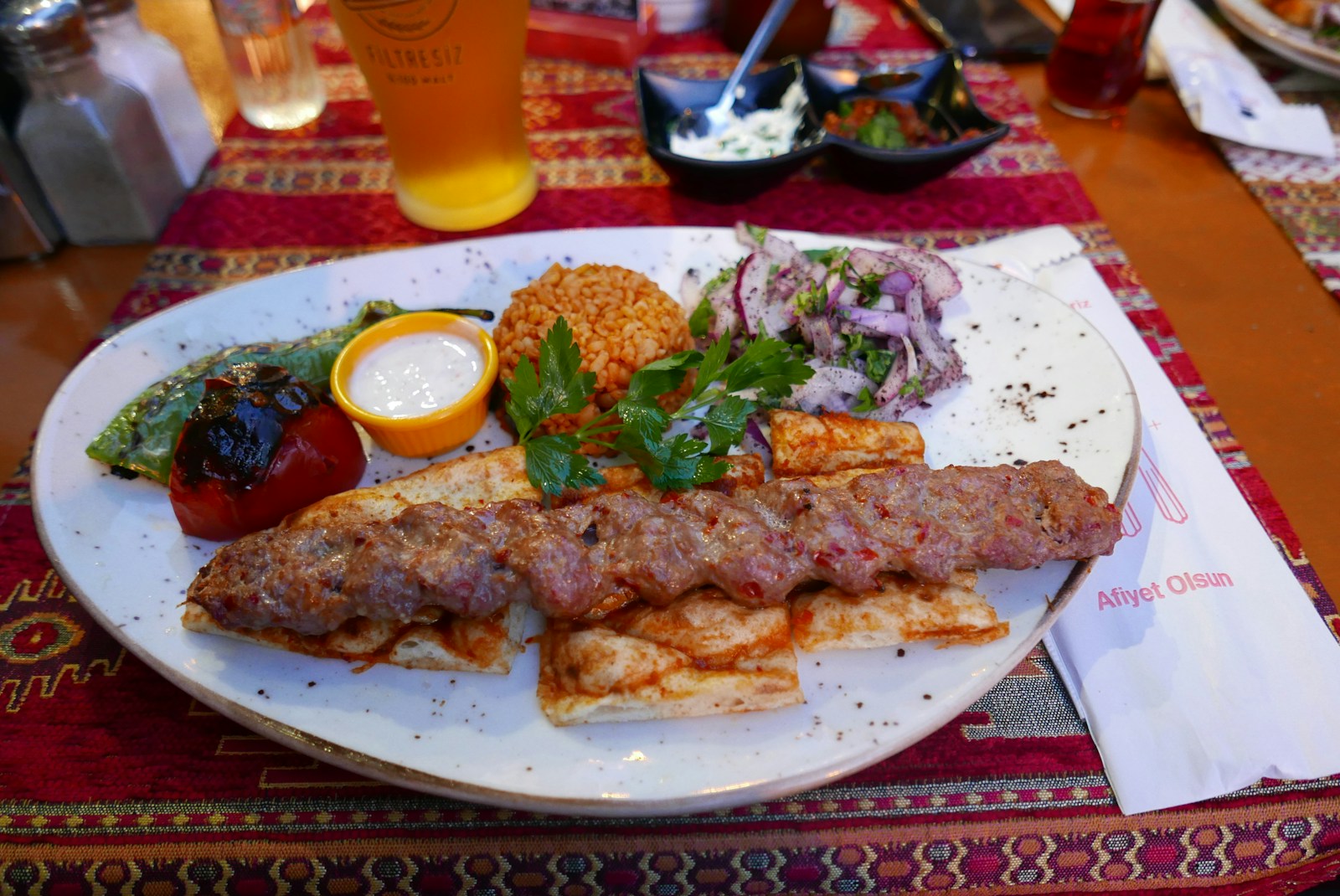Where to Eat in Rome?
Rome, a city renowned for its rich history, art, and culture, is equally famous for its cuisine. With countless restaurants lining its streets, finding the best places to eat can be a daunting task, especially if you’re visiting for the first time. The culinary scene in Rome is a treasure trove, offering everything from traditional dishes passed down through generations to innovative, modern takes on classic recipes. But with so many options, how do you sift through them all to find the true gems? This guide is here to help you navigate the culinary landscape of Rome, pointing you toward some of the most unique and delicious dining experiences the city has to offer.
The challenge isn’t just about finding a good meal in Rome—it’s about discovering the exceptional, those places where the food transcends the ordinary and becomes a memory you’ll cherish long after your trip. Whether you’re craving a perfectly baked pizza, a plate of homemade pasta, or a sweet treat to finish off your meal, Rome has something to offer every palate. But it’s important to know where to look to avoid the tourist traps that can leave you disappointed and out of pocket. Here’s how to find the best restaurants in Rome and enjoy the city’s culinary delights to the fullest.
How to Find the Best Restaurants in Rome
If you’re not familiar with Rome, it can be tempting to settle for the nearest restaurant to major tourist attractions like the Colosseum or St. Peter’s Basilica. However, these areas are often riddled with tourist traps—restaurants that charge high prices for mediocre food. The best culinary experiences in Rome are often found away from the main tourist paths, in neighborhoods where locals dine. It’s here, in the unassuming trattorias and hidden osterias, that you’ll find the heart and soul of Roman cuisine.
When searching for a great place to eat, consider what you’re in the mood for. Are you dreaming of a crisp, wood-fired pizza, a creamy plate of carbonara, or perhaps a savory risotto? In Rome, restaurants often specialize in specific dishes, and they take great pride in perfecting their craft. This means that a restaurant known for its pasta might not offer pizza at all, and vice versa. Therefore, knowing what you want to eat is the first step in narrowing down your options.
One of the best ways to find great restaurants in Rome is to do some research before you go. Online platforms like Tripadvisor are popular, but they aren’t always reliable for finding authentic local spots. The highest-rated restaurants on these sites are often tailored to tourists, which can mean they lack the authenticity and quality you’re looking for. Instead, consider looking for recommendations from locals or searching for restaurants that emphasize being “local” or “authentic.” Reviews from locals, travel blogs, and food websites that focus on authentic experiences can be invaluable resources.
The Essence of Rome’s Best Restaurants: It’s All About the Taste
In Rome, the best restaurants often don’t look like much from the outside. In fact, some of the most celebrated eateries in the city might surprise you with their simplicity. A classic example is Ai Marmi in Trastevere, a place that has received mixed reviews online but is beloved by locals for its authentic Roman pizza. It’s a perfect illustration of why you shouldn’t always judge a restaurant by its appearance—or even by its online ratings.
Ai Marmi is the epitome of a traditional Roman pizzeria. The décor is basic, even a bit shabby, with hard chairs, fluorescent lighting, and an old freezer in the middle of the dining room. It’s not the kind of place where you’d expect to find world-class food, but that’s exactly what you’ll get. The pizzas here are Roman-style: thin, crispy, and topped with simple ingredients. They don’t cater to trends or offer a wide variety of toppings. Instead, they focus on the basics, executed perfectly. The menu is limited, and that’s a good thing—it means the chefs know these dishes inside and out, and they’ve perfected them over years of practice.
For the Romans, it’s the taste and quality of the food that matter most, not the ambiance or service. In fact, the no-frills approach is part of the charm. When you walk into a restaurant like Ai Marmi and see locals packed into every available seat, you know you’re in for a treat. The atmosphere may be chaotic, the waiters brusque, and the noise levels high, but the food will be unforgettable. This is what makes the best restaurants in Rome stand out—they deliver on flavor, even if they don’t win any awards for style.
Navigating Rome’s Culinary Landscape: Local and Authentic is Key
To truly experience Rome’s culinary scene, you need to think like a local. This means venturing beyond the popular tourist spots and exploring neighborhoods where Romans live and eat. When searching for restaurants, avoid generic searches like “best restaurant in Rome.” Instead, focus on finding places that are described as “local” or “authentic.” These are the places where you’re likely to find the real flavors of Rome, unaltered by the demands of mass tourism.
Local food blogs, travel guides, and even a friendly chat with a Roman can point you toward hidden gems that might not appear in the usual top ten lists. Remember, the goal is to find places where the food is made with love and care, using fresh, local ingredients. Whether it’s a family-run trattoria that’s been serving the same dishes for generations or a new spot that’s gaining a reputation among locals, these are the kinds of places that will give you a true taste of Rome.
While this guide offers a few recommendations, it’s just the beginning. Rome is a city with thousands of restaurants, each with its own specialties and charms. The best way to discover them is to be adventurous—take a stroll through different neighborhoods, peek into the eateries where locals are dining, and don’t be afraid to try something new. You might just stumble upon your new favorite restaurant.
Understanding Our Recommendations
Before diving into specific restaurant recommendations, it’s important to understand the criteria behind them. Our approach to dining in Rome is simple: we prioritize local, authentic experiences. We’re not necessarily looking for the fanciest places or the most expensive meals. Instead, we focus on quality—food that’s made with fresh, local ingredients and prepared with care. We also love discovering new flavors, so we’re always on the lookout for dishes that are unique or less common.
If you share these values, then you’ll likely appreciate the restaurants we recommend. We’ve chosen places that offer something special, whether it’s a perfectly made traditional dish, a cozy atmosphere, or a menu that showcases the best of local produce. These are the kinds of places that make dining in Rome an experience to remember.
A Curated Selection of Rome’s Best Restaurants
Let’s dive into some specific recommendations. Each of these restaurants has its own unique appeal, offering dishes that are sure to delight your taste buds.
Ai Marmi: The Quintessential Roman Pizzeria
If you search online for the best pizza in Rome, Ai Marmi in Trastevere will likely appear on many lists. However, you might also notice that it has its fair share of mixed reviews, particularly from tourists who may have been expecting something different. But Ai Marmi is a beloved institution among locals, and for good reason.
This pizzeria is a no-nonsense, straightforward place that doesn’t concern itself with catering to tourist expectations. The décor is as basic as it gets—hard chairs, fluorescent lighting, and an old freezer in the middle of the dining room. The service can be brusque, and the atmosphere is often loud and chaotic. But none of that matters when you take your first bite of their pizza.
The pizzas at Ai Marmi are classic Roman style: thin, crispy, and topped with just a few high-quality ingredients. You won’t find trendy toppings here—just the basics, done exceptionally well. If you’re a fan of simple, authentic pizza, this is the place for you. And if you have room for more, be sure to try their supplì, which are stuffed and breaded rice balls, a Roman specialty. The desserts are also worth a try, though you might need to save some room after indulging in the main course. Be prepared for a wait, especially if you arrive during peak dining hours, but rest assured that the wait is worth it.
Pizzarium Bonci: A Fusion of Tradition and Innovation
Pizzarium Bonci, located just north of the Vatican, is another must-visit spot for pizza lovers in Rome. Unlike Ai Marmi, which sticks to traditional Roman pizzas, Pizzarium offers something a bit different. The pizzas here are thicker, more akin to what you might find in other parts of Italy, but with a twist—innovative toppings made from local, organic ingredients.
Gabriele Bonci, the pizza master behind Pizzarium, is known for his creativity and commitment to quality. Each slice is a work of art, with combinations of flavors that are both surprising and delicious. The pizzas are sold by weight, which means you can try a variety of different toppings without committing to a full pie.
However, Pizzarium isn’t a sit-down restaurant. You’ll be eating your pizza standing up, and there’s often a line out the door. The wait can be long, especially during peak hours, but the experience is well worth it. To avoid the crowds, try visiting outside of regular meal times, and be sure to take a number when you arrive. This place is a favorite among both locals and tourists, and once you taste the pizza, you’ll understand why.
Cacio e Pepe: Pasta Perfection in Prati
If you’re a pasta lover, Cacio e Pepe is a restaurant you simply can’t miss. Located in the Prati district, this restaurant is famous for its pasta dishes, particularly the one it’s named after: cacio e pepe. This classic Roman dish, made with just three ingredients—pasta, pecorino cheese, and black pepper—is a testament to the beauty of simplicity. The result is a creamy, peppery dish that’s incredibly satisfying.
But Cacio e Pepe offers much more than just its namesake dish. The menu features a variety of pastas, as well as meat dishes that are equally delicious. The portions are generous, and you can choose between half and full portions if you want to sample multiple dishes. The atmosphere is warm and inviting, with a mix of locals and savvy travelers who know where to find the best food in Rome.
Due to its popularity, Cacio e Pepe can get crowded, so be prepared for a wait if you arrive during peak times. If you’re looking for a place to relax while you wait, consider heading across the street to the cozy Mary Snack Bar, where you can enjoy a drink and soak in the local atmosphere.
Hosteria Luce: A Special Occasion Destination
If you’re celebrating a special occasion or simply want to treat yourself to an upscale dining experience, Hosteria Luce in Trastevere is an excellent choice. This small, family-run restaurant offers a more refined take on traditional Italian cuisine, with a focus on high-quality ingredients and meticulous preparation.
The menu at Hosteria Luce is carefully curated, offering a selection of dishes that showcase the best of Italian cooking. The zucchini flowers, stuffed with ricotta and lightly fried, are a must-try, as are the handmade ravioli and fresh pasta dishes. The desserts are equally delightful, with options that change seasonally based on the freshest available ingredients.
While Hosteria Luce is on the pricier side, it’s worth every penny for the quality of the food and the intimate, welcoming atmosphere. It’s a popular spot with both locals and tourists, so it’s a good idea to book a table in advance, especially if you’re planning to dine there on a weekend or during a holiday.
Exploring Rome’s Food Markets
Rome’s food markets are a fantastic way to experience the city’s culinary culture firsthand. These markets are not only great places to find fresh produce, meats, and cheeses, but they also offer a variety of ready-to-eat foods that are perfect for a quick meal on the go.
One of the most popular food markets in Rome is Mercato Centrale, located at Termini Station. This market is a bit more upscale, with carefully selected vendors offering high-quality food and drinks. Each vendor specializes in something different, and one of the market’s rules is that no two vendors can sell the same type of food. This means you’ll find a diverse range of options, from traditional Italian dishes to more modern, experimental fare.
Another market worth visiting is Mercato Testaccio, located in the Testaccio neighborhood. This market is known for its innovative approach to traditional foods, with vendors offering everything from classic Roman street food to creative new dishes. The market is a popular spot with locals, and it’s a great place to sample a variety of different foods in one place.
In addition to these larger markets, Rome is also home to many smaller, local food markets where you can find fresh produce, meats, and other ingredients. One such market is Mercato dell’Unità, located near the Vatican. This market is a bit more low-key, but it’s a great place to pick up fresh ingredients for a picnic or to take back to your accommodation if you’re staying in a place with a kitchen.
Quick Bites Near the Sights
When you’re out exploring Rome’s famous landmarks, finding a good place to eat can be a challenge. Many of the restaurants near major attractions cater to tourists and offer overpriced, mediocre food. However, with a little effort, you can find some great spots that are both convenient and delicious.
One tip is to venture a bit further away from the main tourist areas. Even walking just 500 meters away from a major sight can lead you to better food at more reasonable prices. Look for places where locals are eating—this is often a good sign that the food is worth trying.
Throughout the city, you’ll also find pizza al taglio shops, which sell square slices of pizza by weight. These shops are a great option for a quick, satisfying meal. If you see locals lining up for lunch, you’ve likely found a good spot. Gelato is another excellent option for a quick snack. When choosing a gelateria, look for places that serve their gelato from covered containers, as this indicates that they’re keeping it at the right temperature.
If you’re visiting the Vatican, consider stopping by Panificio Lintozzi for a quick bite. This pizza bar is a favorite with locals and offers a variety of delicious, freshly baked pizzas. For dessert, head to Capitan Cono, a nearby gelateria known for its creamy gelato and crispy croissants.
Near the Colosseum, you can find a small pizza bar called Fauna, located near the University of Engineering. This spot is popular with students and offers cheap, tasty pizzas in a casual setting. If you prefer to sit down, there are a few cozy bars and cafes just around the corner on Via della Polveriera, where you can relax with a drink or a light meal.
In Trastevere, Latteria is a great place to stop for a glass of wine and a quick rest. This cozy spot is perfect for unwinding after a day of sightseeing. If you’re in the mood for beer and snacks, Baylor Café is another good option, offering a laid-back atmosphere and a selection of local brews. Before you leave Rome, be sure to visit Biscottificio Innocenti, one of the city’s oldest bakeries. Their bruttiboni, crispy hazelnut macaroons, are a must-try and make for a perfect treat to take home.
Conclusion: Savoring the Flavors of Rome
Rome is a city that offers endless opportunities for culinary exploration. From its traditional pizzerias and pasta restaurants to its innovative food markets and hidden local gems, there’s something to satisfy every palate. The key to finding the best restaurants in Rome is to think like a local—seek out the places where Romans eat, and don’t be afraid to venture off the beaten path.
Whether you’re enjoying a simple slice of pizza or indulging in a multi-course meal at an upscale restaurant, the dining experiences you have in Rome will be some of the most memorable parts of your trip. So take your time, savor the flavors, and let the city’s rich culinary heritage guide your taste buds on an unforgettable journey.




